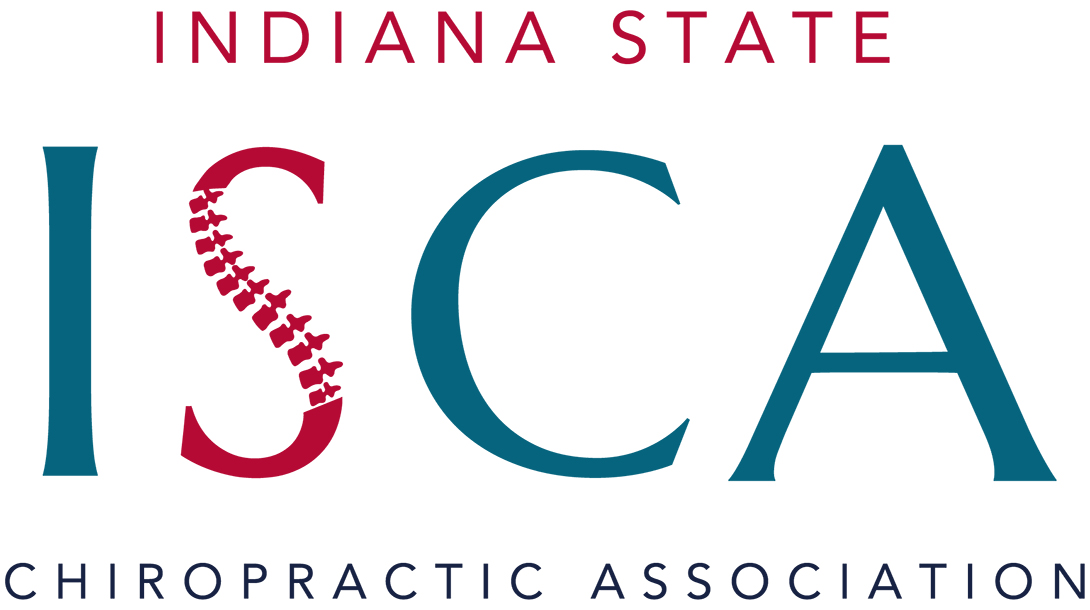What is Chiropractic?
History of Chiropractic
The roots of chiropractic care can be traced all the way back to the beginning of recorded time. Writings from China and Greece recorded in 2700 B.C. and 1500 B.C., mention spinal manipulation and the maneuvering of the lower extremities to ease low back pain. Hippocrates, the Greek physician, who lived from 460 to 357 B.C., also published texts detailing the importance of manipulative care. In one of his writings he declares, “Get knowledge of the spine, for this is the requisite for many diseases”.
In the United States, the practice of spinal manipulation began gaining momentum in the late nineteenth century. In 1895, Daniel David Palmer founded the Chiropractic profession in Davenport, Iowa. Palmer was well read in medical journals of his time and had significant knowledge of the developments that were occurring throughout the world regarding anatomy and physiology. In 1897, Daniel David Palmer founded the Palmer School of Chiropractic, which has continued to be one of the most prominent chiropractic colleges in the nation.
Throughout the twentieth century, doctors of chiropractic gained legal recognition in all fifty states. A continuing recognition and increasing respect for the chiropractic profession in the United States has led to growing support for chiropractic care, not only in the United States, but all over the world. The research that has emerged from national and international sources has yielded exceedingly influential results, which have changed, shaped and molded perceptions of chiropractic care.
The exhaustive report, Chiropractic in New Zealand published in 1979 strongly supported the efficacy of chiropractic care and elicited medical cooperation in conjunction with chiropractic care. The 1993 Manga study published in Canada investigated the cost effectiveness of chiropractic care. The results of this study concluded that chiropractic care would save hundreds of millions of dollars annually with regard to work disability payments and direct health care costs.
Doctors of chiropractic have become pioneers in the field of non-invasive care promoting science-based approaches to a variety of ailments. A continuing dedication to chiropractic research may well lead to even more discoveries in preventing and combating maladies related to the musculoskeletal system, in future years.
Education of Doctors of Chiropractic
 Chiropractors usually hold the academic degree of “Doctor of Chiropractic” (D.C.), which is awarded after an average of 8-9 years of university training. Doctors of Chiropractic must complete four to five years at an accredited chiropractic college. The complete curriculum includes a minimum of 4,200 hours of classroom, laboratory and clinical experience. Approximately 555 hours are devoted to learning about adjustive techniques and spinal analysis in colleges of chiropractic. In medical schools, training to become proficient in manipulation is generally not required of, or offered to, students. The Council on Chiropractic Education requires that students have 90 hours of undergraduate courses with science as the focus.
Chiropractors usually hold the academic degree of “Doctor of Chiropractic” (D.C.), which is awarded after an average of 8-9 years of university training. Doctors of Chiropractic must complete four to five years at an accredited chiropractic college. The complete curriculum includes a minimum of 4,200 hours of classroom, laboratory and clinical experience. Approximately 555 hours are devoted to learning about adjustive techniques and spinal analysis in colleges of chiropractic. In medical schools, training to become proficient in manipulation is generally not required of, or offered to, students. The Council on Chiropractic Education requires that students have 90 hours of undergraduate courses with science as the focus.
Those intending to become doctors of chiropractic must also pass the national board examination as well as all examinations required by the state in which the individual wishes to practice. The individual must also meet all individual state licensing requirements in order to become a doctor of chiropractic.
An individual studying to become a doctor of chiropractic receives an education in both the basic and clinical sciences and in related health subjects. The intention of the basic chiropractic curriculum is to provide an in-depth understanding of the structure and function of the human body in health and disease. The educational program includes training in the basic medical sciences, including anatomy with human dissection, physiology, and biochemistry. Thorough training is also obtained in differential diagnosis, radiology and therapeutic techniques. This means, a doctor of chiropractic can both diagnose and treat patients. This separates them from non-physician status providers, like physical therapists. According to the Council on Chiropractic Education doctors of chiropractic are trained as primary care providers and/or first-contact health care providers.
What is a Doctor of Chiropractic?
The proper title for a doctor of chiropractic is “doctor” as they are considered physicians under Medicare and in the overwhelming majority of states. The professional credentials abbreviation “D.C.” means doctor of chiropractic. The American Chiropractic Association also advocates in its Policies on Public Health that DCs may be referred to as (chiropractic) physicians as well.
Chiropractic Philosophy
The chiropractic perspective on health and disease emphasizes two fundamental concepts:
- the structure and condition of the body influences how the body functions and its ability to heal itself; and
- the mind-body relationship is instrumental in maintaining health and in the healing processes. It looks to address these diseases not by the use of drugs and chemicals, but by locating and adjusting a musculoskeletal area of the body which is functioning improperly.
Although chiropractic shares much with other health professions, its emphasis and application of philosophy distinguishes it from modern medicine. Chiropractic philosophy gravitates toward a holistic (“total person”) approach to healing which combines elements of the mind, body and spirit and maintains that health depends on obedience to natural laws, and that deviation from such laws can result in illness.
Chiropractic Philosophy includes:
- emphasis on patient recuperative abilities rather than surgery
- recognition that dynamics exist between lifestyle, environment and health
- understanding the cause of illness in order to eliminate it, rather than simply treat symptoms
- recognition of the centrality of the nervous system and its intimate relationship with the capacities of the human body
- balancing benefits versus risks of clinical interventions
- recognition of the primary importance of monitoring progress closely through appropriate diagnostic procedures
- a patient-centered, hands-on approach focused on influencing function through structure
- focus on early intervention emphasizing timely diagnosis and treatment of conditions that are wholly functional and reversible
Chiropractic philosophy blends an effective combination of conviction, critical thinking, open-mindedness, and appreciation of the natural order of things. Chiropractic focuses on the establishment and maintenance of a relationship between patients and their environment which is most conducive to functional well-being.
In summary, Doctors of Chiropractic are primary care providers focused on health rather than disease alone. Doctors of Chiropractic are used extensively in the care of functional pathology of the neuromusculoskeletal system and for wellness care. This involves a whole range of activities aimed at overall health of the individual as well as assisting in alleviating the specific problem presented.”
As a profession, the primary belief is in natural and conservative methods of health care. Doctors of chiropractic have a deep respect for the human body’s ability to heal itself without the use of surgery or medication. These doctors devote careful attention to the biomechanics, structure and function of the spine, its effects on the musculoskeletal and neurological systems, and the role played by the proper function of these systems in the preservation and restoration of health. A Doctor of Chiropractic is one who is involved in the treatment and prevention of disease, as well as the promotion of public health, and a wellness approach to patient healthcare.
Scope of Practice
 “The diagnosis and analysis of any interference with normal nerve transmission and expression, the procedure preparatory to and complementary to the correction thereof by an adjustment of the articulations of the vertebral column, its immediate articulation and includes other incidental means of adjustment of the spinal column and the practice of drugless therapeutics. Chiropractic does not include prescription or administration of legend drugs or other controlled substances; performing incisive surgery or internal or external cauterization; penetration of the skin with a needle or other instrument for any purpose except the purpose of blood analysis; use of colonic irrigations, plasmatics, ionizing radiation therapy, or radionics; conducting invasive diagnostic tests or analysis of body fluids except for urinalysis; the taking of X-rays of any organ other than the vertebral column and extremities; and the treatment or attempt to treat infectious diseases, endocrine disorders or atypical or abnormal histology”.(Indiana State board of Chiropractic Examiners, 2016)
“The diagnosis and analysis of any interference with normal nerve transmission and expression, the procedure preparatory to and complementary to the correction thereof by an adjustment of the articulations of the vertebral column, its immediate articulation and includes other incidental means of adjustment of the spinal column and the practice of drugless therapeutics. Chiropractic does not include prescription or administration of legend drugs or other controlled substances; performing incisive surgery or internal or external cauterization; penetration of the skin with a needle or other instrument for any purpose except the purpose of blood analysis; use of colonic irrigations, plasmatics, ionizing radiation therapy, or radionics; conducting invasive diagnostic tests or analysis of body fluids except for urinalysis; the taking of X-rays of any organ other than the vertebral column and extremities; and the treatment or attempt to treat infectious diseases, endocrine disorders or atypical or abnormal histology”.(Indiana State board of Chiropractic Examiners, 2016)
Doctors of Chiropractic frequently treat and manage individuals with neuromusculoskeletal complaints, such as headaches, joint pain, neck pain, low back pain and radicular pain syndromes. Chiropractors also treat and manage patients with osteoarthritis, spinal disk conditions, carpal tunnel syndrome, tendonitis, sprains, and strains. However, the scope of conditions that Doctors of Chiropractic manage or provide care for is not limited to neuromusculoskeletal disorders. Anecdotally, chiropractors have successfully treated and managed a variety of non-neuromusculoskeletal conditions such as: allergies, asthma, digestive disorders, and otitis media (non-suppurative). A variety of techniques, treatment and procedures are used to enhance healing and maintain optimum health.
————————————————————————-
References
Chapman-Smith, David: The Chiropractic Profession. West Des Moines, Iowa, NCMIC Group Inc., 2000: 11-17, 70-71.
Chiropractic: State of Art. Arlington, Virginia, American Chiropractic Association, 1998: 2-3, 12-14.
Spinal Manipulation Policy Statement. Arlington, Virginia: American Chiropractic Association, 1999: 6.
Indiana State Board of Chiropractic Examiners, 2016

